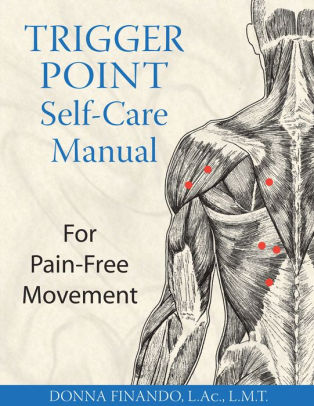As part of my recovery from an injury several years ago, I began a journey of physical healing that involved many different kinds of exercise, movement, and physical therapies. Generally, those physical therapies were various kinds of massage work, including some that used 'trigger points.'
Normal, healthy muscle is supple and elastic but dysfunctional muscle tissue will be 'shortened' and unable to perform its full range of motion. It's also weaker than when it is in a healthy state. We experience this as being 'tight', and movement causing varying degrees of discomfort.
Trigger points (TPs) most often develop within chronically stressed muscles. A TP is a tender spot within a taut band of muscle tissue and manifests as both active and latent. The major difference between the two is that active TPs produce pain that is generally referred away from the affected muscle in a characteristic pattern.
The Trigger Point Self-Care Manual can be used to learn about the treatment of TP's and as a reference book for specific concerns. I found it is best used when I experienced muscle soreness. I'd pick up the Manual, find the specific pain pattern and address the path as the author describes.
There are three chapters defining what TPs are and how to treat them, including instructions on learning how to palpate muscles, common musculo-skeletal injuries that develop around them, and guidelines for injury prevention. Throughout the other nine sections of the book, there are illustrations of TPs, radiation patterns and elegant line drawings of stretches to be done after treatment. All of the sections contain helpful text describing how to do stretches, which activities are most likely to cause pain in a particular area, and how to treat that pain.
I recommend The Trigger Point Manual for anyone interested in treating their own pain and also for those who provide physical therapies to other.
~review by Lisa Mc Sherry
Author: Donna Finando
Healing Arts Press
pp. 208, $19.95
Trigger Point Self Care Manual: For Pain-Free Movement

©
2010 - 2025
Facing North
